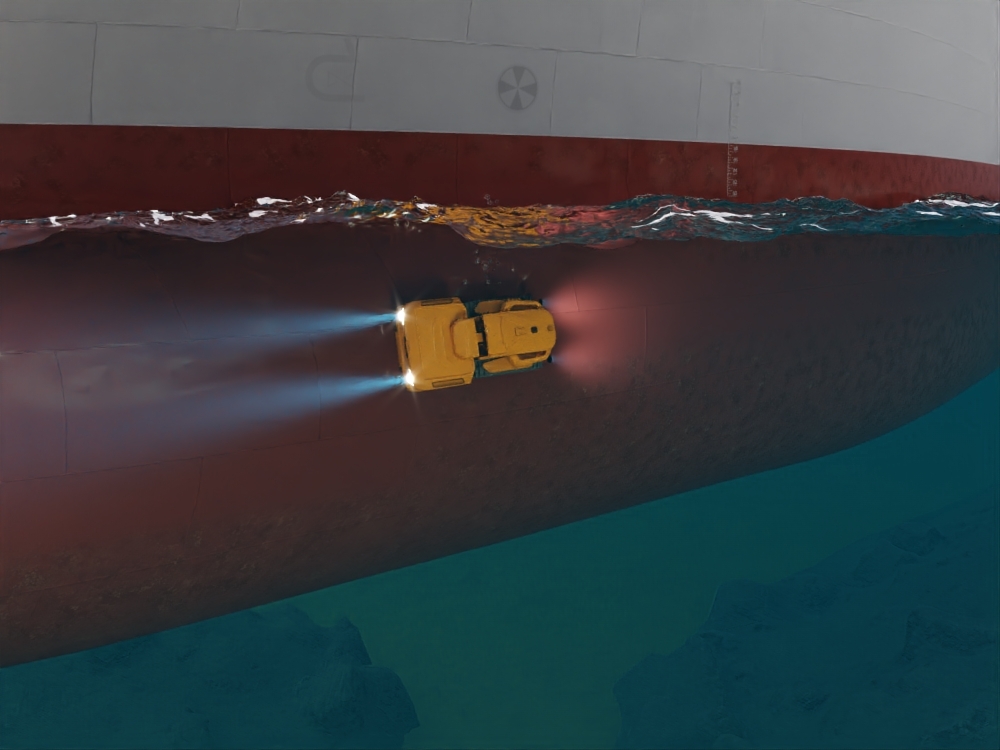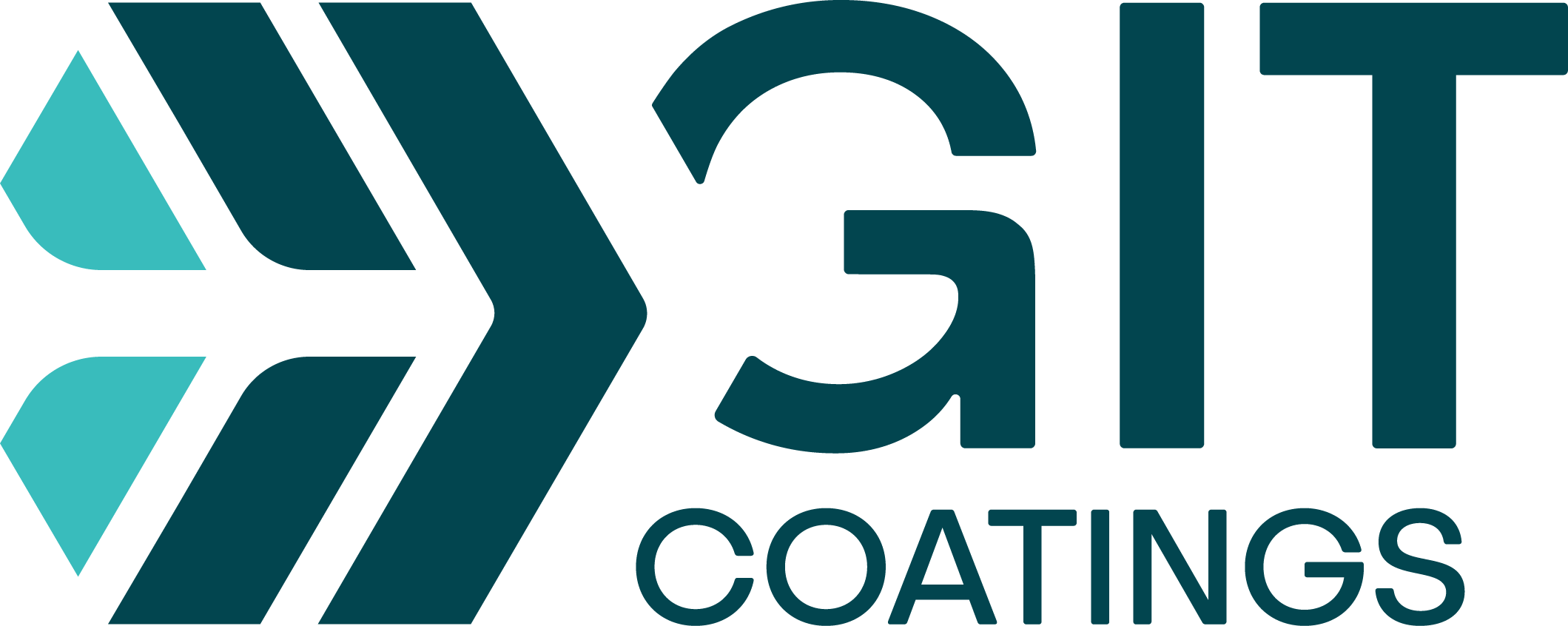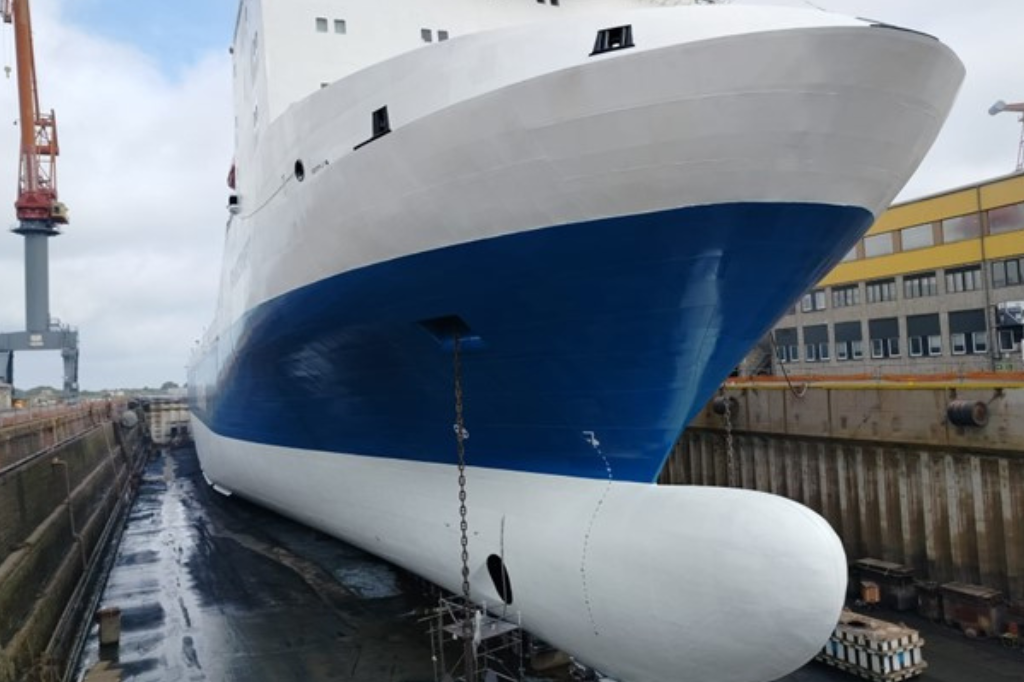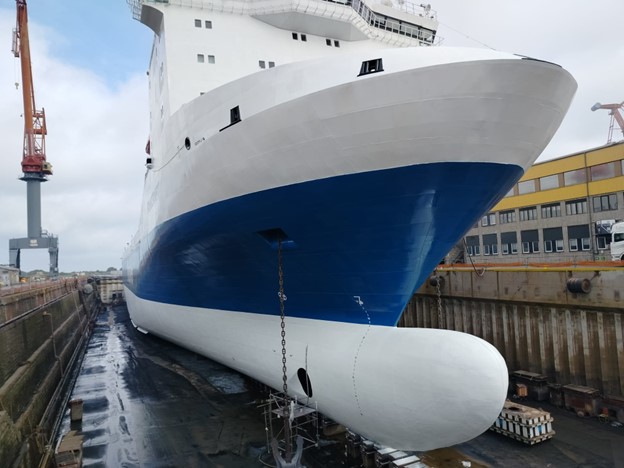
XGIT-Fuel on Ferry
Always Clean Hulls – Part 3: Groomable Coatings: A Sustainable Alternative to Biocide-Based Antifouling Technologies
October 08, 2024
Authors Marciel Gaier , Ph.D. Philippos Sfiris
Link for Part 1 – (1) Always Clean Hulls – Part 1: Why keeping the hull clean is important
Link for Part 2 – (1) Always clean hulls – Part 2: Key market drivers
The following table shows real-life examples of different coating systems with reactive and proactive cleaning and the outcomes in terms of coating integrity and pollution.

Comparison of different coating systems combined with cleaning methods – real-life examples
*Grooming: Grooming for ship hulls refers to the regular, gentle cleaning or maintenance of a ship’s hull to prevent the accumulation of biofouling (marine organisms such as algae, barnacles, and mussels) before it becomes firmly attached. Unlike traditional hull cleaning, which is typically performed after significant fouling has occurred, grooming is a preventive approach performed more frequently using soft, non-abrasive tools to remove early-stage biofilm and slime. Grooming poses no issues with invasive species.
**Cleaning: Cleaning, refers to the process of removing accumulated biofouling (such as algae, barnacles, and other marine organisms), dirt, and debris from the surface of the hull. This is typically done when biofouling has already formed and can include mechanical methods such as scrubbing, water jetting, or using specialized cleaning equipment.
Groomability test results
The impact of different grooming technologies on GIT coating has been assessed by using simulations of grooming cycles up to 12 years (>140 passes) with soft brushes or air cavitation technology. The coating’s properties tested as well as the results of testing are summarized below.
Tested and approved grooming providers that uses soft brushes and gentle cavitation to groom the surface.
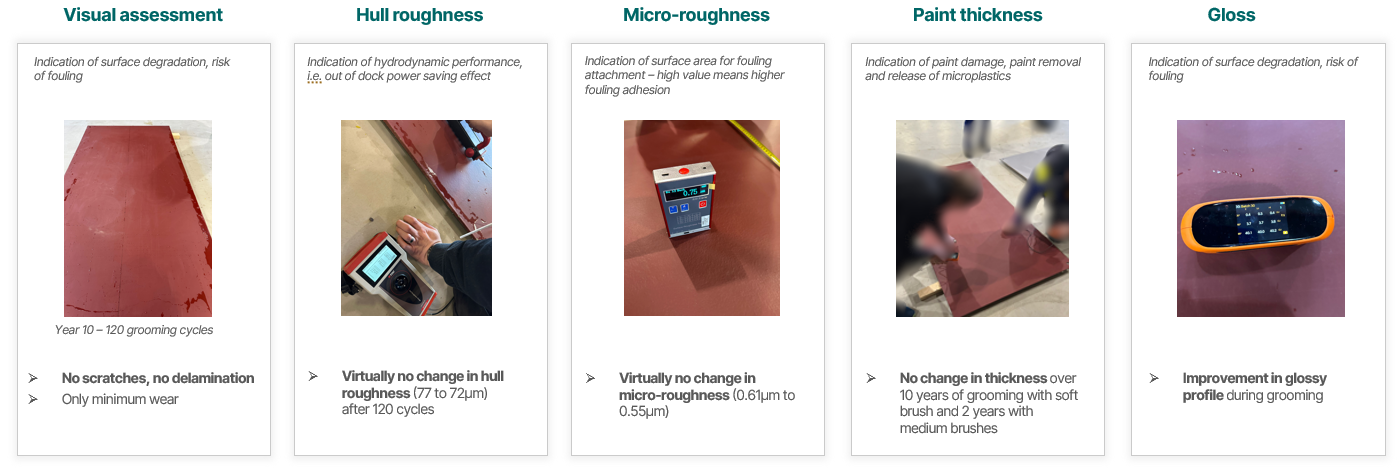
Grooming test results with GIT’s graphene-based coating
Verifying coating performance pre and post cleaning – Enhanced Type Approval
Cleaning frequency in the case of grooming can vary from every 1 month to every 3-4 months. How do we ensure that the coating will maintain its performance before and after cleaning during the docking cycle? Antifouling type approvals do not give any performance warranties as their mandatory requirement is the proof that the coating is Tributyltin (TBT) free.
Lloyds Register (LR) has recently introduced a new Enhanced Antifouling Type Approval [7]. The development of this new type of approval sets a new standard for antifouling coatings to address the growing need for effective biofouling management, which contributes to decarbonization efforts and protecting marine ecosystems. This approval provides ship owners and operators with validated assurance for the performance of hull coatings in keeping hulls clean and sustainable, pre- and post-grooming operations. Specifically, the new type approval gives assurance that:
- the coating performs and it’s compatible with the agreed cleaning schedules required for the vessel based on biofouling risk assessment derived from her operating profile
- the cleaning technology/brushes used will not damage the paint
LR has awarded the maritime industry’s first Enhanced Antifouling Type Approval to GIT Coatings for their XGIT-Fuel graphene-based hull coating, which is the only coating approved to be groomed on the market.
Low-friction effect of coating: How to assess and reap the benefits
Meanwhile, the hydrodynamic effect of coating and the commercial benefits for the shipowners from a smooth low friction coating should not be overlooked. Low friction hull coatings are considered an Energy Efficiency Technology in Category A as per IMO MEPC.1/Circ 896 [8] where a new improved Vref can be determined for both pre-EEDI and post-EEDI ships by in-service measurements with torquemeter as per ISO 15016:2015E and for pre-EEDI ships by re-evaluation of model test based on Average Hull Roughness measurements used in ITTC Prediction Method as per IACS Rec 172-Rev.1 2024 [9]. Benefits for the shipowner include the revision of EEXI or reduction or power limitations, potential improvement of Righthip GHG rating 2.0 and revision of Charterparty description with more attractive speed-consumption warranty.
The following illustration shows how the coating’s low friction effect can be assessed with the methodologies available today.

Methodologies for assessing the low friction effect of coating by using sea trials or numerical method based on Average Hull Roughness measurements
The ship-specific calculation of the coating effect presents itself as the coefficient of friction of the topcoat antifouling coating that is applied in drydock. XGIT-Fuel’s coefficient of friction has been measured in a fully turbulent flow channel at the University of Strathclyde and the resulting roughness function data can predict the coating’s effect on the frictional resistance and thus effective power of any vessel using “Granville’s Similarity Law of Scaling Procedure” [10]. This power savings prediction method is dependent on the vessel type (ratio of form drag vs. frictional drag), speed range, and previous type of antifouling system used. Depending on these factors, the predicted power savings can range from 2%-10% at constant speed.
Always clean hulls – A vision for the future
GIT Coatings, a rapidly growing company in the marine coatings market, is driving a proactive approach in hull management by integrating low friction graphene-based coatings with state-of-the-art grooming technologies aligned with IMO’s emphasis on prevention setting a new standard in sustainable maritime operations. The combination is offering low friction out of dock that is maintained during service life, zero leaching of biocides or microplastics, minimum degradation over time and no disruption in the operation replacing the need for divers.
The key elements of the two building blocks are the following:
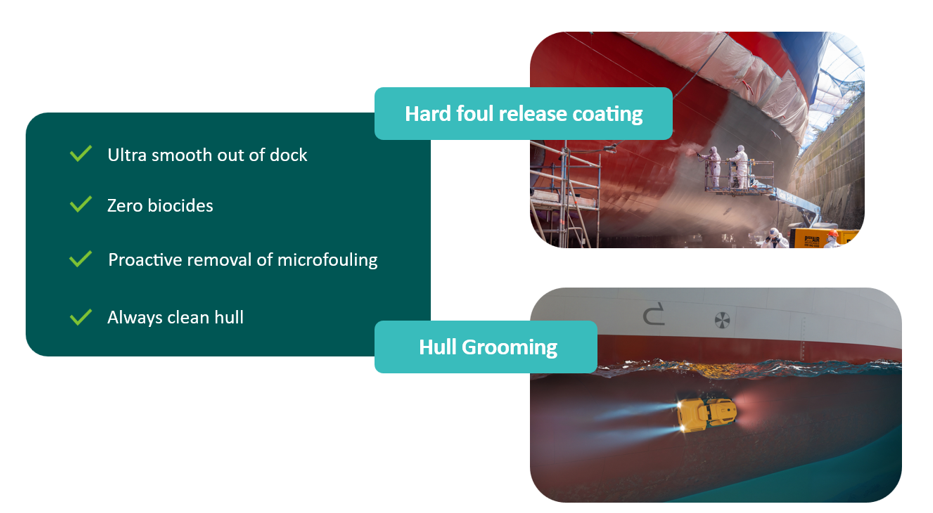
The GIT ‘bundle’ offering – The world’s most sustainable and effective hull management solution
- Graphene-based hard foul release coating XGIT-Fuel – provided by GIT Coatings
- Ultra smooth out of dock
- Hard cleanable surface with high impact resistance
- Deters attachment and settlement of fouling due to amphiphilic surface
- Zero leaching of biocides or microplastics
- One layer coating, one layer primer – easy and fast to apply
- Hull grooming – provided by GIT’s ecosystem of partners
- Fully or semi-autonomous robot onboard operated by the crew
- Frequent inspections and cleanings to proactively remove microfouling (up to FR20) resulting in a hull always free of slime
- Brushes specifically designed for gentle cleaning
- Easy deployment, crew training by experts
- Record log of inspections – proof of clean hull ready to share with port authorities
[7] How hull maintenance is changing the conversation on sustainable operations, Lloyd’s Register, 2024
[8] Guidance on treatment of innovative energy efficiency technologies for calculation and verification of the attained EEDI and EEXI, IMO MEPC.1/Circ.896, 2021
[9] EEXI Implementation Guidelines, Rev.1, IACS, Apr 2024
Submit Below & Receive Full Article
XGIT-GROOM
